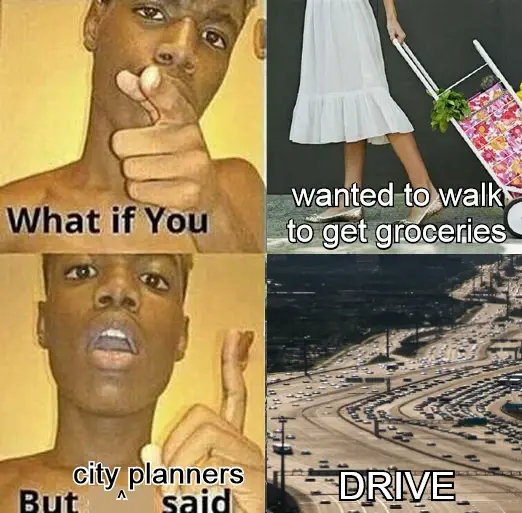Fuck Cars
A place to discuss problems of car centric infrastructure or how it hurts us all. Let's explore the bad world of Cars!
Rules
1. Be Civil
You may not agree on ideas, but please do not be needlessly rude or insulting to other people in this community.
2. No hate speech
Don't discriminate or disparage people on the basis of sex, gender, race, ethnicity, nationality, religion, or sexuality.
3. Don't harass people
Don't follow people you disagree with into multiple threads or into PMs to insult, disparage, or otherwise attack them. And certainly don't doxx any non-public figures.
4. Stay on topic
This community is about cars, their externalities in society, car-dependency, and solutions to these.
5. No reposts
Do not repost content that has already been posted in this community.
Moderator discretion will be used to judge reports with regard to the above rules.
Posting Guidelines
In the absence of a flair system on lemmy yet, let’s try to make it easier to scan through posts by type in here by using tags:
- [meta] for discussions/suggestions about this community itself
- [article] for news articles
- [blog] for any blog-style content
- [video] for video resources
- [academic] for academic studies and sources
- [discussion] for text post questions, rants, and/or discussions
- [meme] for memes
- [image] for any non-meme images
- [misc] for anything that doesn’t fall cleanly into any of the other categories
Recommended communities:
view the rest of the comments

so do you want the earth to magically shrink to be walkable or were u thinking ice age level migration style walking
Walkability is a matter of urban design. Only 20% of the US lives somewhere rural; 80% live in a city, suburb, or small town. We're taking about how the 80% shops.
Walkability is about lot size, density in general, mixed use development (putting houses near restaurants and shops), parking minimums, that sort of thing.
Walkable areas tend to be connected by public transit. Look at Amsterdam - to get to work, you might bike to the train station, take a train, then walk or bike to the office. You don't have to walk clear across the city; public transit connects walkable spaces.
Compare that with American suburban design, where shops are put far from houses, on ugly-ass loud dangerous stroads with comically oversized parking lots. You don't walk anywhere because anywhere you'd want to walk to is incredibly unpleasant to exist in. People will literally drive in their car to a walking path or a gym treadmill.